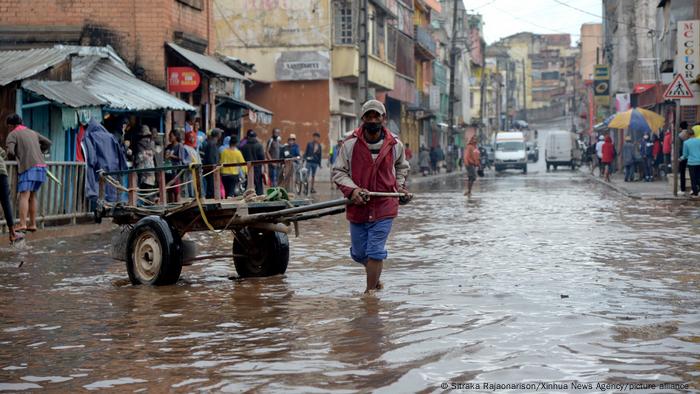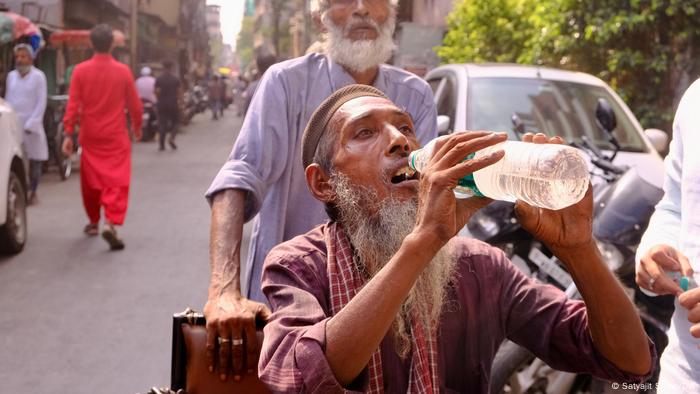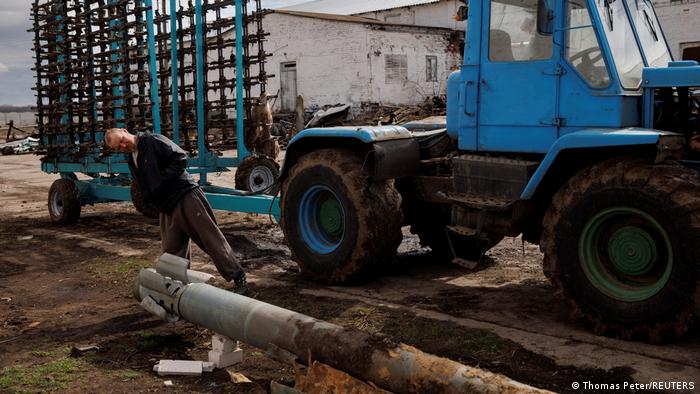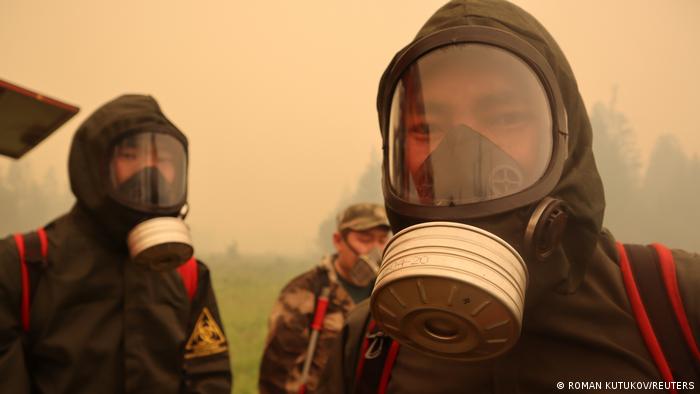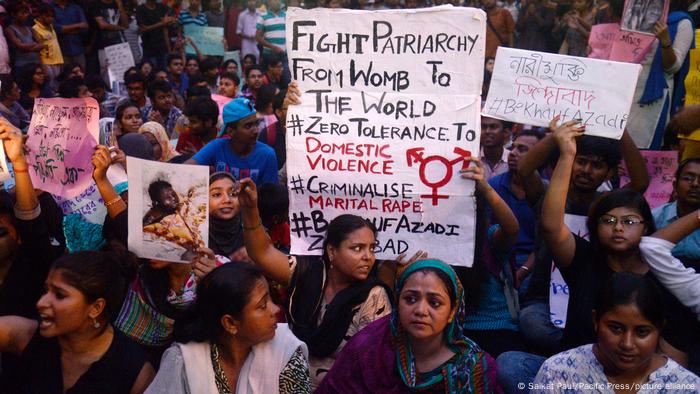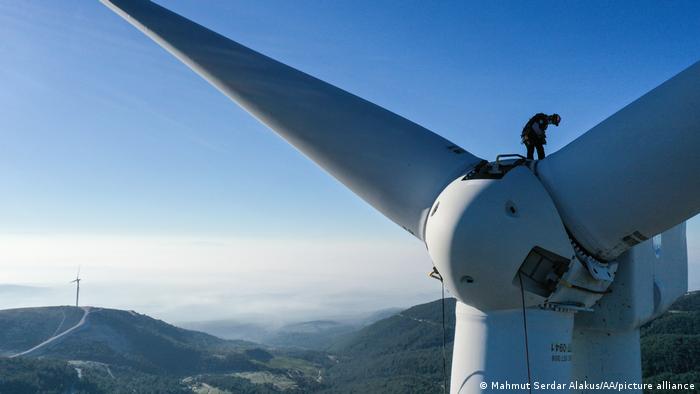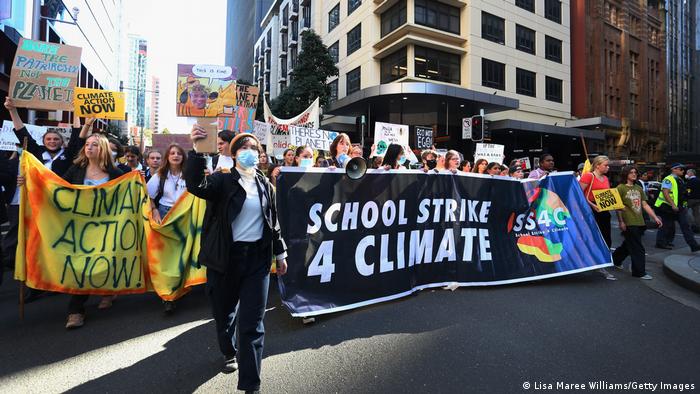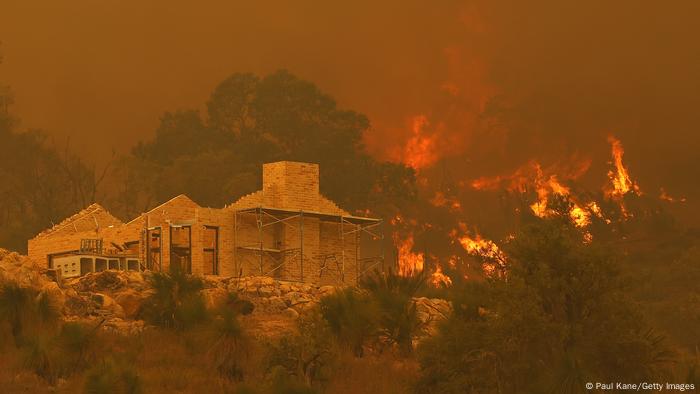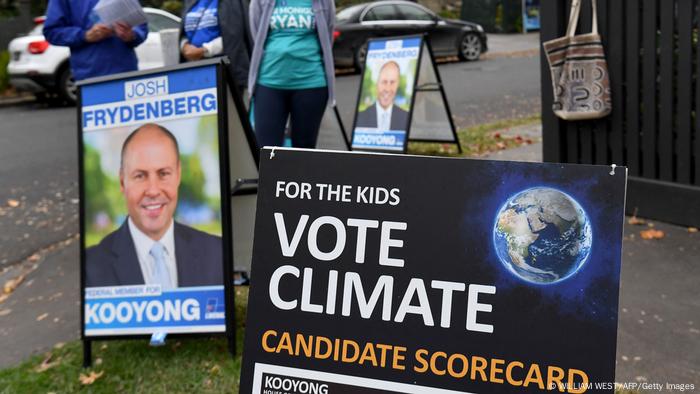People have warped the climate so much that in 2021 oceans grew hotter, higher and more acidic than ever recorded, according to the World Meteorological Organization.
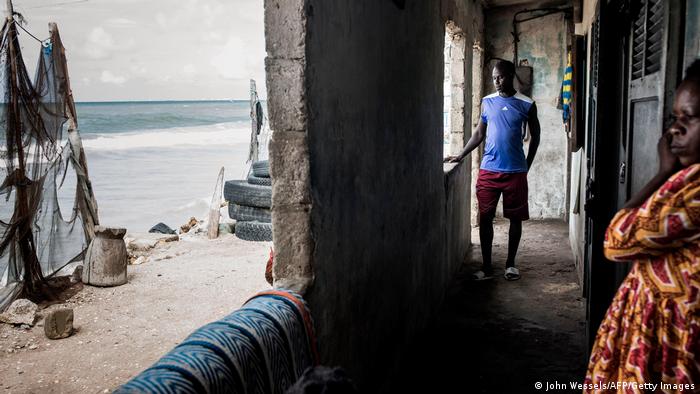
Rising sea levels have made coastal floods an existential threat for fishing villages across the world
Humanity has clogged the atmosphere with so much heat-trapping gas that four critical measures of the health of the planet broke records last year, according to a report published Wednesday by the World Meteorological Organization (WMO).
Razing forests and burning fossil fuels had already pushed the climate into a precarious state that human civilization had never previously seen. But in 2021, the State of the Climate Report 2021 found, the world broke records for greenhouse gas concentrations, while oceans grew to new heights, temperatures and levels of acidity. Extreme weather caused hundreds of billions of dollars in damage as storms and wildfires strengthened by climate change tore through communities and swept away homes, fishing boats and farms.
"Years of investment in disaster preparedness means that we are better at saving lives, though economic losses are soaring," said WMO Secretary-General Petteri Taalas in a statement. "But much more needs to be done."
Countries continue to burn fossil fuels despite warnings
In 2015, world leaders signed the Paris Agreement to try to keep the planet from warming more than 1.5 degrees Celsius (2.7°F) above pre-industrial levels by the end of the century — a pledge that scientists have shown would require immediate and deep cuts to emissions.
But even as violent weather has wrought havoc on their citizens, governments from the United States to China are continuing to pour money into infrastructure to extract and burn more fossil fuels. The policies they are pursuing are set to heat the planet 2.7 C by the end of the century. Scientists expect the 1.5 C threshold will likely be crossed in a decade.
"Below those levels means manageable climate change," said Omar Baddour, a climate scientist at the WMO and lead author of the report. "Above will mean it's very difficult to manage those consequences."
Hotter average temperatures mean more waves of extreme heat
The last seven years have been the hottest seven on record, according to the WMO, a United Nations body. Last year was 1.1 C hotter than the average between 1850 and 1900. While that was slightly cooler than in some recent years — the result of natural climatic phenomenon called La Nina — it did not change the overall warming trend.
Hidden behind that increase lies a deadly worsening of extremes.
In July, scientists from the research group World Weather Attribution (WWA) found climate change had supercharged a heat wave that roasted the US and Canada weeks earlier. Many of the victims were elderly people who were unable to cool down during unnaturally warm nights in homes without air-conditioning. Had humanity not polluted the atmosphere with greenhouse gases, the researchers found, the heat wave would have been 150 times less likely and 2 C cooler.
The same team also found that climate change had made heavy rains the following month in northern Europe 3-19% stronger, worsening floods that killed more than 180 people in Germany alone.
Now, an estimated 1 in 6 people on the planet are struggling through a blistering heat wave in India and Pakistan that has overwhelmed electricity grids and — particularly for outdoor workers and those with health problems — turned daily tasks like going to work and buying groceries into a gamble with fate.
Heat wave scorches crops needed to alleviate food shortages
India's national and regional governments must immediately put together heat management plans, said Aditi Mukherji, a scientist at the International Water Management Institute. But more importantly, she added, India and other developing countries must keep the pressure on high historical emitters to immediately cut their emissions. "We simply cannot adapt to such heat waves. Mitigation is the best adaptation."
The effects are being felt beyond the Indian subcontinent. The heat wave has scorched crops in the country urgently needed to alleviate global food shortages in the wake of Russia's invasion of Ukraine. India, which is the world's second-biggest wheat producer after China, banned exports of the crop on Saturday, triggering a further rise in wheat prices. It comes on the back of a series of crises — conflict, extreme weather, economic shocks and the pandemic — that had already "undermined decades of progress" towards food security, the WMO found.
"It's deeply concerning," said Maarten Van Aalst, Director of the international Red Cross Red Crescent Climate Center, who contributed to the WWA analyses. "With all these compound crises, the poorest and most vulnerable are hit hardest."
Fossil fuel investments incompatible with carbon budget
In April, the Intergovernmental Panel on Climate Change (IPCC) published a report on climate solutions that found the pollution that would result from using existing and planned fossil fuel infrastructure over their lifetimes is more than enough to cross the 1.5 C threshold. At that level of warming, a 1-in-10-year heat wave will have become 5 times more likely. A 1-in-50-year heat wave will have become 8 times more likely.
A study published in the journal Energy Research and Social Science last year found the four biggest investor-owned fossil fuel companies — Chevron, ExxonMobil, BP, and Shell — were responsible for 11% of global fossil fuel and cement emissions between 1965 and 2018. The figure includes pollution that came from burning the fuels they sold.
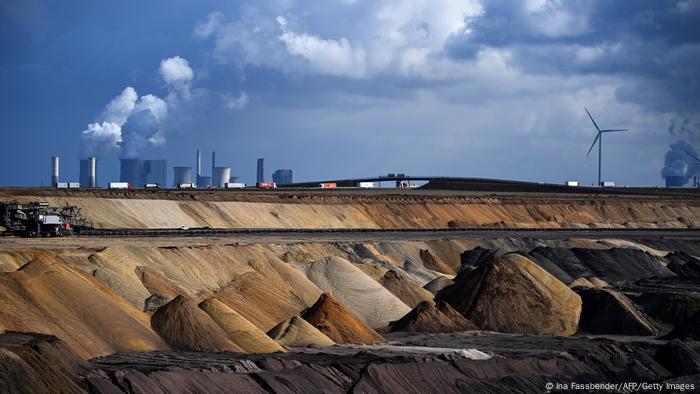
Germany, the sixth-biggest historical polluter of greenhouse gases, has proven reluctant to kick its addiction to coal
Chevron, ExxonMobil and BP did not respond to a request for comment on their responsibility for extreme weather events made stronger by burning fuels they sold. Shell declined to comment.
Fossil fuel companies have not only caused the climate crisis but also hidden it from people and lobbied to delay action, said Mitzi Jonelle Tan, a climate activist with the Fridays for Future movement in the Philippines. The latest IPCC report, compiled by hundreds of leading scientists, found that "opposition from status quo interests" is a barrier to establishing stringent climate policies.
"People are suffering because of their greed," said Tan. "The least these companies can do is pay reparations for the losses and damages we have experienced."
Edited by: Jennifer Collins
THE WORLD IS BURNINGRussia: No sign of reliefMany regions in Russia have been burning for weeks, with the area around Yakutia in the far northeast having been hit particularly hard. The authorities have counted more than 250 fires currently burning across Russia, covering a total area of more than 3.5 million hectares (8.6 million acres).
Climate change indicators hit record highs in 2021: UN

Greenhouse gas concentrations, sea level rise, ocean heat and ocean acidification all set new records last year, the UN's World Meteorological Organization says
(AFP/NOEL CELIS) (NOEL CELIS)
Robin MILLARD
Wed, May 18, 2022
Four key climate change indicators all set new record highs in 2021, the United Nations said Wednesday, warning that the global energy system was driving humanity towards catastrophe.
Greenhouse gas concentrations, sea level rise, ocean heat and ocean acidification all set new records last year, the UN's World Meteorological Organization (WMO) said in its "State of the Global Climate in 2021" report.
The annual overview is "a dismal litany of humanity's failure to tackle climate disruption", UN chief Antonio Guterres said.
"The global energy system is broken and bringing us ever closer to climate catastrophe."
The WMO said human activity was causing planetary-scale changes on land, in the ocean and in the atmosphere, with harmful and long-lasting ramifications for ecosystems.
WMO chief Petteri Taalas said the war in Ukraine had been overshadowing climate change, which "is still the biggest challenge we are having as mankind".
- Record heat -
The report confirmed the past seven years were the top seven hottest years on record.
Back-to-back La Nina events at the start and end of 2021 had a cooling effect on global temperatures last year.
Even so, it was still one of the warmest years ever recorded, with the average global temperature in 2021 about 1.11 degrees Celsius above the pre-industrial level.
The 2015 Paris Agreement on climate change saw countries agree to cap global warming at "well below" 2C above average levels measured between 1850 and 1900 -- and 1.5C if possible.
"All major climate indicators are quite frankly heading in the wrong direction and without much greater ambition and urgency, we are about to lose the narrow window of opportunity to keep the 1.5-degree goal alive," Guterres' climate action advisor Selwin Hart told a press conference.
Taalas said the climate was changing "before our eyes".
"The heat trapped by human-induced greenhouse gases will warm the planet for many generations to come. Sea level rise, ocean heat and acidification will continue for hundreds of years unless means to remove carbon from the atmosphere are invented," he said.
- 'Consistent picture of warming world' -
Four key indicators of climate change "build a consistent picture of a warming world that touches all parts of the Earth system", the report said.
Greenhouse gas concentrations reached a new global high in 2020, when the concentration of carbon dioxide (CO2) reached 413.2 parts per million globally, or 149 percent of the pre-industrial level.
Data indicate they continued to increase in 2021 and early 2022, the report said.
Taalas reiterated Covid-19 lockdowns had had no impact on atmospheric greenhouse gases concentrations.
Global mean sea level reached a new record high in 2021, rising an average of 4.5 millimetres per year throughout 2013 to 2021, the report said.
That is more than double the average annual rise of 2.1 mm per year between 1993 and 2002, with the increase between the two time periods "mostly due to the accelerated loss of ice mass from the ice sheets", it said.
Taalas said the melting of glaciers would raise sea levels for hundreds or thousands of years to come, due to CO2 concentrations in the atmosphere.
"This is a lost game already," he said.
- Price of failure -
Ocean heat hit a record high last year, exceeding the 2020 value, the report said.
And it is expected the upper 2,000 metres of the ocean will continue to warm in the future -- "a change which is irreversible on centennial to millennial timescales", said the WMO.
The ocean absorbs around 23 percent of the annual emissions of human-caused CO2 into the atmosphere. While this slows the rise of atmospheric CO2 concentrations, CO2 reacts with seawater and leads to ocean acidification.
The UN's Intergovernmental Panel on Climate Change concluded with "very high confidence" that open ocean surface acidity is at the highest "for at least 26,000 years".
"We should take action now," Taalas told AFP.
"We are now heading 2.5 to three degrees warming instead of 1.5, which would be best for our future.
"It is better to invest in climate-friendly technologies than to live with the consequences of climate change that are going to be even 20 times more expensive if we fail."
rjm/nl/raz
Robin MILLARD
Wed, May 18, 2022
Four key climate change indicators all set new record highs in 2021, the United Nations said Wednesday, warning that the global energy system was driving humanity towards catastrophe.
Greenhouse gas concentrations, sea level rise, ocean heat and ocean acidification all set new records last year, the UN's World Meteorological Organization (WMO) said in its "State of the Global Climate in 2021" report.
The annual overview is "a dismal litany of humanity's failure to tackle climate disruption", UN chief Antonio Guterres said.
"The global energy system is broken and bringing us ever closer to climate catastrophe."
The WMO said human activity was causing planetary-scale changes on land, in the ocean and in the atmosphere, with harmful and long-lasting ramifications for ecosystems.
WMO chief Petteri Taalas said the war in Ukraine had been overshadowing climate change, which "is still the biggest challenge we are having as mankind".
- Record heat -
The report confirmed the past seven years were the top seven hottest years on record.
Back-to-back La Nina events at the start and end of 2021 had a cooling effect on global temperatures last year.
Even so, it was still one of the warmest years ever recorded, with the average global temperature in 2021 about 1.11 degrees Celsius above the pre-industrial level.
The 2015 Paris Agreement on climate change saw countries agree to cap global warming at "well below" 2C above average levels measured between 1850 and 1900 -- and 1.5C if possible.
"All major climate indicators are quite frankly heading in the wrong direction and without much greater ambition and urgency, we are about to lose the narrow window of opportunity to keep the 1.5-degree goal alive," Guterres' climate action advisor Selwin Hart told a press conference.
Taalas said the climate was changing "before our eyes".
"The heat trapped by human-induced greenhouse gases will warm the planet for many generations to come. Sea level rise, ocean heat and acidification will continue for hundreds of years unless means to remove carbon from the atmosphere are invented," he said.
- 'Consistent picture of warming world' -
Four key indicators of climate change "build a consistent picture of a warming world that touches all parts of the Earth system", the report said.
Greenhouse gas concentrations reached a new global high in 2020, when the concentration of carbon dioxide (CO2) reached 413.2 parts per million globally, or 149 percent of the pre-industrial level.
Data indicate they continued to increase in 2021 and early 2022, the report said.
Taalas reiterated Covid-19 lockdowns had had no impact on atmospheric greenhouse gases concentrations.
Global mean sea level reached a new record high in 2021, rising an average of 4.5 millimetres per year throughout 2013 to 2021, the report said.
That is more than double the average annual rise of 2.1 mm per year between 1993 and 2002, with the increase between the two time periods "mostly due to the accelerated loss of ice mass from the ice sheets", it said.
Taalas said the melting of glaciers would raise sea levels for hundreds or thousands of years to come, due to CO2 concentrations in the atmosphere.
"This is a lost game already," he said.
- Price of failure -
Ocean heat hit a record high last year, exceeding the 2020 value, the report said.
And it is expected the upper 2,000 metres of the ocean will continue to warm in the future -- "a change which is irreversible on centennial to millennial timescales", said the WMO.
The ocean absorbs around 23 percent of the annual emissions of human-caused CO2 into the atmosphere. While this slows the rise of atmospheric CO2 concentrations, CO2 reacts with seawater and leads to ocean acidification.
The UN's Intergovernmental Panel on Climate Change concluded with "very high confidence" that open ocean surface acidity is at the highest "for at least 26,000 years".
"We should take action now," Taalas told AFP.
"We are now heading 2.5 to three degrees warming instead of 1.5, which would be best for our future.
"It is better to invest in climate-friendly technologies than to live with the consequences of climate change that are going to be even 20 times more expensive if we fail."
rjm/nl/raz
